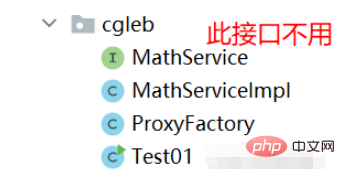
IOC: Umkehrung der Kontrolle, Objekt The Der Aufrufprozess zwischen Erstellung und Objekten wird von Spring verwaltet. Der Zweck der Verwendung von IOC besteht darin, die Kopplung zu reduzieren.
AOP: Aspektorientierte Programmierung, eine Technologie, die eine einheitliche Wartung von Programmfunktionen durch Vorkompilierung und dynamische Proxys während der Laufzeit erreicht. AOP ist die Fortsetzung von OOP, einem Hotspot in der Softwareentwicklung, einem wichtigen Inhalt im Spring-Framework und einem abgeleiteten Paradigma der funktionalen Programmierung. AOP kann verwendet werden, um verschiedene Teile der Geschäftslogik zu isolieren, wodurch die Kopplung zwischen den verschiedenen Teilen der Geschäftslogik verringert, die Wiederverwendbarkeit des Programms verbessert und die Effizienz der Entwicklung verbessert wird. Die zugrunde liegende Implementierung von AOP basiert auf einem dynamischen Proxy (die Implementierungsmethode besteht darin, beim Wechsel zur Schnittstelle den nativen dynamischen JDK-Proxy zu verwenden; beim Wechsel zur normalen Methode den dynamischen cglib-Proxy zu verwenden).
(2) Verifizierungsfunktion: Wenn mehrere Orte verifiziert werden müssen, müssen mehrere Änderungen vorgenommen werden.
Zu diesem Zeitpunkt müssen Sie einen dynamischen Proxy verwenden, um das Problem zu lösen. Es gibt zwei Möglichkeiten, einen dynamischen Proxy zu implementieren:
[1] JDK-nativer dynamischer Proxy: Der Nachteil ist, dass es basierend auf der Schnittstelle abgeschlossen werden muss.
2.1.1 MathService-Schnittstellenklasse
public interface MathService {
//+
public Double add(double a,double b);
//-
public Double sub(double a,double b);
//*
public Double mul(double a,double b);
///
public Double div(double a,double b);
}2.1.2 MathServiceImpl-Implementierungsschnittstellenklasse
public class MathServiceImpl implements MathService{
@Override
public Double add(double a, double b) {
Double result=a+b;
return result;
}
@Override
public Double sub(double a, double b) {
Double result=a-b;
return result;
}
@Override
public Double mul(double a, double b) {
Double result=a*b;
return result;
}
@Override
public Double div(double a, double b) {
Double result=a/b;
return result;
}
}public class ProxyFactory {
//被代理对象
private Object target;
public ProxyFactory(Object target) {
this.target = target;
}
//获取代理对象
public Object getProxy(){
/**
* ClassLoader loader, 被代理对象的类加载器
* Class<?>[] interfaces, 被代理对象实现的接口
* InvocationHandler h: 当代理对象执行被代理的方法时,会触发该对象中的invoke功能
*/
ClassLoader loader=target.getClass().getClassLoader();
Class<?>[] interfaces=target.getClass().getInterfaces();
InvocationHandler h=new InvocationHandler() {
@Override
public Object invoke(Object proxy, Method method, Object[] args) throws Throwable {
//可以加上需要的非业务代码
//method.getName()获取方法名
// Arrays.asList(args)获取输入值
System.out.println("this is "+method.getName()+" method begin with"+ Arrays.asList(args));
//method:表示代理对象要代理的方法
//invoke:回调该函数
//args:方法需要的参数
Object result = method.invoke(target, args);//代理对象回调该方法
return result;
}
};
//先写此处方法,才可找到上述三个方法填写方式
Object o = Proxy.newProxyInstance(loader, interfaces, h);
return o;
}
}public class Test01 {
public static void main(String[] args) {
MathServiceImpl target=new MathServiceImpl();
ProxyFactory proxyFactory=new ProxyFactory(target);
MathService proxy = (MathService) proxyFactory.getProxy();
Double add = proxy.add(15.0, 5.0);
System.out.println(add);
}
} 2.2 cglib dynamischer Proxy
2.2 cglib dynamischer Proxypublic class MathServiceImpl{
public Double add(double a, double b) {
Double result=a+b;
return result;
}
public Double sub(double a, double b) {
Double result=a-b;
return result;
}
public Double mul(double a, double b) {
Double result=a*b;
return result;
}
public Double div(double a, double b) {
Double result=a/b;
return result;
}
}< ;dependency> #< /dependency> 
public class ProxyFactory implements MethodInterceptor {
private Object target;
public ProxyFactory(Object target) {
this.target = target;
}
//获取代理对象
public Object getProxy(){
Enhancer enhancer=new Enhancer();
//指定被代理对象的父类
enhancer.setSuperclass(target.getClass());
//指定回调类
enhancer.setCallback(this);
//创建代理对象
return enhancer.create();
}
//当代理对象执行代理方法时触发的方法
public Object intercept(Object obj, Method method, Object[] args, MethodProxy proxy) throws Throwable {
// System.out.println("before++++++++++++++++++++");
// Object result = method.invoke(target, args);
//可以加上需要的非业务代码
//method.getName()获取方法名
// Arrays.asList(args)获取输入值
System.out.println("this is "+method.getName()+" method begin with"+ Arrays.asList(args));
//method:表示代理对象要代理的方法
//invoke:回调该函数
//args:方法需要的参数
Object result = method.invoke(target, args);//代理对象回调该方法
return result;
}
}public class Test01 {
public static void main(String[] args) {
MathServiceImpl target=new MathServiceImpl();
ProxyFactory proxyFactory=new ProxyFactory(target);
MathServiceImpl proxy = (MathServiceImpl) proxyFactory.getProxy();
Double add = proxy.add(1, 2);
System.out.println(add);
}
}3.1 Entsprechende Abhängigkeiten hinzufügen# 🎜🎜#<dependency> <groupId>org.springframework</groupId> <artifactId>spring-webmvc</artifactId> <version>5.2.15.RELEASE</version> </dependency> <dependency> <groupId>org.springframework</groupId> <artifactId>spring-aspects</artifactId> <version>5.2.15.RELEASE</version> </dependency>Nach dem Login kopieren3.2 Spring.xml-Datei konfigurieren
# 🎜🎜#3.3 MathService-Schnittstellenklasse<?xml version="1.0" encoding="UTF-8"?> <beans xmlns="http://www.springframework.org/schema/beans" xmlns:xsi="http://www.w3.org/2001/XMLSchema-instance" xmlns:context="http://www.springframework.org/schema/context" xmlns:aop="http://www.springframework.org/schema/aop" xsi:schemaLocation="http://www.springframework.org/schema/beans http://www.springframework.org/schema/beans/spring-beans.xsd http://www.springframework.org/schema/context https://www.springframework.org/schema/context/spring-context.xsd http://www.springframework.org/schema/aop https://www.springframework.org/schema/aop/spring-aop.xsd"> <!--包扫描--> <context:component-scan base-package="com.qy151wd.proxy.proxy.aop"/> <!--开启aop注解--> <aop:aspectj-autoproxy/> </beans>Nach dem Login kopierenpublic interface MathService { public Double add(double a, double b); public Double sub(double a, double b); public Double mul(double a, double b); public Double div(double a, double b); }Nach dem Login kopieren
3.4 MathServiceImpl-Implementierungsschnittstelle 🎜# 3.5 LogAspect-Klasse3.6 Testklasse@Service public class MathServiceImpl implements MathService { @Override public Double add(double a, double b) { Double result=a+b; return result; } @Override public Double sub(double a, double b) { Double result=a-b; return result; } @Override public Double mul(double a, double b) { Double result=a*b; return result; } @Override public Double div(double a, double b) { Double result=a/b; return result; } }Nach dem Login kopieren
@Service //若是使用@component也可以
@Aspect //表示该类为切面类
public class LogAspect {
//任意返回类型 aop包下的所有类都有切面日志 使用通配符
//第一个*:修饰符和返回值类型
//第二个*:所有类
//第三个*:所有方法
@Before("execution(* com.qy151wd.proxy.proxy.aop.*.*(..))")
public void before(){
System.out.println("方法执行前的日志");
}
@After("execution(* com.qy151wd.proxy.proxy.aop.*.*(..))") //总会被执行,不管有没有异常
public void after(){
System.out.println("方法执行后的日志");
}
@AfterReturning("execution(* com.qy151wd.proxy.proxy.aop.*.*(..))")//只有碰到return后才会执行
public void afterReturning(){
System.out.println("碰到return后执行");
}
@AfterThrowing("execution(* com.qy151wd.proxy.proxy.aop.*.*(..))")//异常通知
public void afterThrowing(){
System.out.println("出现异常了");
}
}Das obige ist der detaillierte Inhalt vonWas ist der dynamische Java AOP-Proxy?. Für weitere Informationen folgen Sie bitte anderen verwandten Artikeln auf der PHP chinesischen Website!




